"Second breath" fighter F-5
Lightweight, simple and relatively inexpensive F-5 fighter clearly stands out among its counterparts, who were in service with the US Air Force. The American fighters of the second and third generation were notable for their large mass, complexity of design and, as a result, high cost of living. Heavy machines "hundredth" series, which began to arrive in the US Air Force at the end of 50, turned out to be too expensive for many US allies. They demanded the big expenses on operation, repair and preparation of the flight technical staff.
In 1958, the Pentagon signed a contract with Northrop to develop a relatively simple and inexpensive supersonic fighter optimized for strikes against ground targets, and at the same time capable of maneuvering air combat. The fighter was intended primarily for export deliveries under various "mutual assistance" programs.
At the same time, the US Air Force came to the conclusion that they did not need such a fighter and that the F-5 could be promoted to the external market.
The lifeline to Northrop and the F-5 fighter was thrown by President Kennedy, who came to the White House in 1962. His administration called for no means to “defend freedom and fight against communism.” For this, a wide sale of supersonic fighters to the allied US countries was envisaged. That's when F-5, which received quite a suitable name, Freedom Fighter, was demanded.
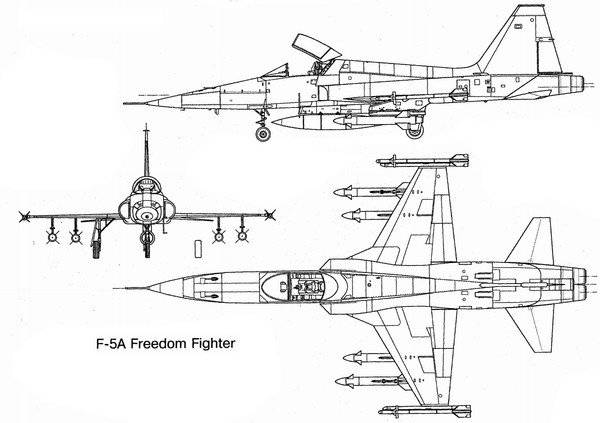
Northrop beat its competitors with two cards - low cost (F-5A cost 100 000 dollars less than the cheapest version of F-104, devoid of radar and navigation system) and the possible "international" choice of T-38 with which he had much in common , as a single NATO training aircraft. Officially, the Pentagon announced 5 in April of choosing the F-1962A as a fighter intended for mutual assistance deliveries, and in August of the same year the contract for the serial production of 170 single-seat F-5A and combat double F- 5B.
In February, 1964, the company received the first export order for 64 machines for Norway. The customer requested that the initial version of the F-5A be modified in order to ensure normal operation in the Arctic. On the Norwegian F-5A (G) were mounted the device for heating the cab windshield, brake hook for landing on short runways of mountain airfields. This was followed by offers from Iran, Greece, South Korea, and by the end of 1965, the firm’s order book was about 1000 fighters. The F-5A really became an “international” fighter.
F-5 of various modifications consisted or are in service with the air forces of Bahrain, Brazil, both Vietnamese, Holland, Honduras, Indonesia, Jordan, Spain, Yemen, Canada, Kenya, Libya, Malaysia, Mexico, Morocco, Norway, Saudi Arabia, Singapore, Sudan , USA, Thailand, Tunisia, Taiwan, Turkey, Philippines, Switzerland, Ethiopia.
The first in combat conditions were tested by light fighters the Americans in Vietnam. Especially for military trials in July 1965, the 4503rd tactical aviation squadron with 12 fighter aircraft of the release of 1963 and 1964. Before being sent to Vietnam, armored aircraft weighing 90 kg were installed on planes, drop-underwing pylons for weapons, an air refueling system, and sights with calculators were installed. Silver cars received a three-color camouflage.
For three and a half months, the squadron pilots flew around 2700 sorties, hitting 4000 h. They destroyed at least 2500 of various structures, 120 sampans, around 100 trucks, approximately 50 fortifications. Own losses amounted to one F-5, shot down in December from rifle weapons. The pilot ejected unsuccessfully and died in the hospital. Two more planes got missiles of MANPADS "Strela" in the engines, but were able to return to the base on one working TRD. All combat missions were made only to combat ground targets.
The pilots noted the excellent stability and controllability of the aircraft for all types of combat load. Emphasizing that the aircraft is almost impossible to enter into a corkscrew, due to its small size and good maneuverability, the F-5 presented a difficult target for the Viet Cong anti-aircraft guns (according to statistics, Super Saber hit once at ninety sorties, once at F-5 in 240 sorties), ease of maintenance and machine reliability.
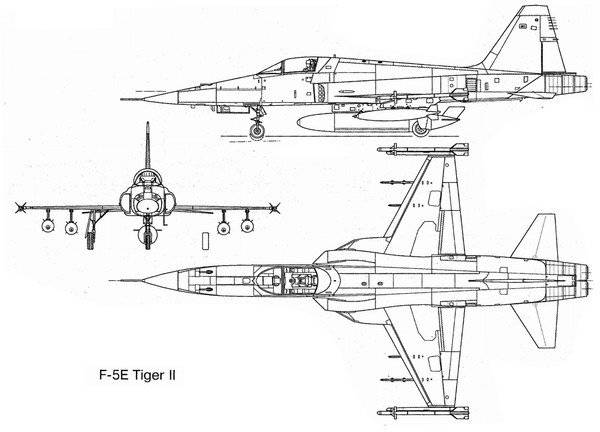
After successfully completing the combat tests, these aircraft began to be delivered to the Air Force of South Vietnam.
In total, the Vietnamese received 120 F-5A / B and RF-5A and at least 118 more advanced, upgraded F-5Е, and some of them went to Vietnam from Iran and South Korea. There is no information about air battles with MiGs, however, it is known that at least four RF-5A scouts were shot down over the Ho Chi Minh trail. In April, the South Vietnamese Air Force Lt. 1975 Nguyen Thanh Trang, in his F-5E, bombed the presidential palace in Saigon, after which he flew to one of the airfields of North Vietnam. This bombing was the prologue to the victory of North Vietnam and the stampede of Americans from Saigon.
In May, the war ended. As trophies, the Vietnamese Communists got 87 F-5A / B and 27 F-5E. Some of them entered service with several mixed squadrons, which also had MiG-21. By the 1978, all fighters of this type were concentrated in the 935 Fighter Aviation Regiment based in Da Nang, the aircraft were actively operated until the middle of the 80's.
The Vietnamese handed over several captured aircraft to the USSR, Czechoslovakia and Poland, where they underwent a comprehensive assessment and testing. One by one, the F-5E is on display in the aviation museums of Krakow and Prague.
On the initiative of the Chief of the Air Force Scientific Research Institute, General I.D. Gaydayenko, supported by the Deputy Air Force Commander-in-Chief for armament M.N. Mishuk, they conducted comparative tests and training battles with domestic MiG-21bis and MiG-23ML fighters. The technical staff who prepared the elegant American aircraft for flight, he remembered the simplicity and thoughtfulness of the design, ease of access to the serviced units. One of the participants in the study of the American aircraft, the leading engineer of the Scientific Research Institute of the Air Force A. Marchenko, recalling, noted the dignity of the fighter as a non-glare dashboard: high-quality illuminated instrument glasses in any light did not create problems with reading information. Engineers at the Institute of the Air Force have long puzzled over the appointment of a button at the bottom of a deep niche in the cabin. As it turned out, it was intended to unlock the use of weapons when the chassis was released.
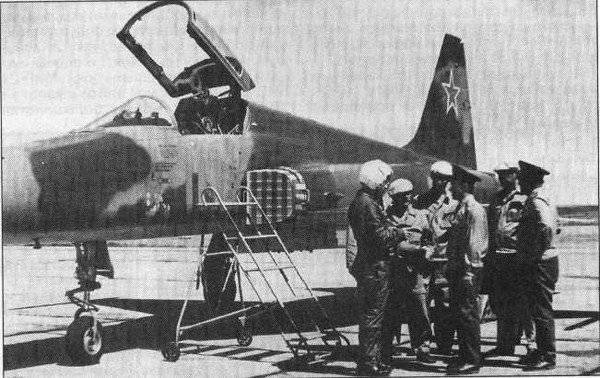
Soviet test pilots appreciated the comfort of the cabin, a good overview of it, rational placement of instruments and controls, easy take-off and excellent maneuverability at high subsonic speeds. F-5E flew in Vladimirovka about a year, until one of the chassis tires collapsed. After testing at the Air Force Institute, the aircraft was handed over to TsAGI for conducting static tests, and many of its components and assemblies were taken to the aircraft design bureaus, where interesting technical solutions from Northrop were used in the development of domestic machines.
Their immediate participant, Honored Test Pilot of the USSR, Hero of the Soviet Union, Colonel V.N. Kondaurov in his book Life-long Runway very interestingly and in detail recalls these tests.
After a rigorous analysis of the materials, the conclusions of the F-5E tests were as follows:
- the MiG-21 BIS fighter has the best acceleration characteristics, the rate of climb at speeds over 500km / h - due to
greater thrust-to-weight ratio and angular speeds of turns at speeds over 800 km / h;
- at speeds of 750-800 km / h none of the aircraft’s advantages
has - the fight went on equal terms, but the melee did not work because of large
turning radii;
- at speeds lower than 750 km / h F-5E has the best
characteristics of maneuverability, and this advantage increases with increasing altitude and decreasing flight speed;
- F-5E has a wider area of maneuvering, where
it is possible to perform steady turns with a radius of smaller 1800 meters;
- On the F-5E a better view from the cockpit and a more comfortable cabin layout;
- F-5E has a greater ammunition, but a smaller total rate of fire of guns, which allows you to have more time firing of them.
Kondaurov wrote about the American fighter: “Not inclined to perform energetic maneuvers in the flight configuration of the wing (wing mechanization removed), he was transformed when the pilots transferred him to a maneuverable configuration (rejected slats and flaps). From the heavy "lump" he turned into a swallow.
It was noted that without the use of wing mechanization, the F-5E has no advantage in maneuverability. On the F-5E “Tiger II” of the first series (one such aircraft was mastered by Soviet test pilots), the pilot could use the switch installed on the engine control knob to install socks and flaps in the 5 fixed positions I had given in the table. On late-series F-5E aircraft, the deflection of the socks and flaps was made automatic - based on a signal from the altitude and speed sensors.
The analysis of the tests carried out made it necessary to reconsider the degree of importance of certain parameters when evaluating the aircraft maneuverability.
Tactical techniques of air combat with the F-5E and recommendations to combatant fighter pilots were developed. The general meaning of these recommendations was as follows: impose a battle on the enemy in conditions where the MiG-21 BIS has advantages over F-5E, and dodge (or try to get out of) the fight under adverse conditions - taking advantage of the speed and acceleration characteristics.
Despite the widespread worldwide, in the United States "Tigers" entered only the specialized units of the "aggressors" of the Air Force, fleet and marine corps. By their maneuverability characteristics, they turned out to be closest to the MiG-21. The best pilots were selected in the squadron of "aggressors" and it is not surprising that they quite often won fights with much more modern F-14s, F-15s and F-16s.
F-5E's existing in the US flight units were very intensively operated, flights were often conducted at low altitude with significant overloads. This could not affect the technical condition of the machines.
At the end of 90, an F-5E retrofit program was adopted for the Aggressors in order to extend their service life. However, the technical support of the remaining in service with the F-5 "Tiger-2" aircraft at the beginning of the 21 of the 20th century became too expensive, and for this reason it was decided to write them off.
In order to compensate for the “losses” in the “Aggressors” flight units, it was decided to buy out the “Tigers” from Switzerland.
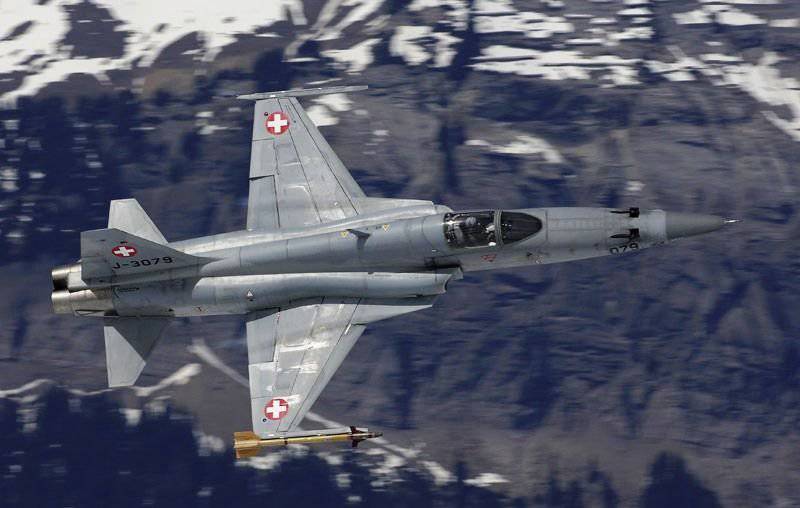
The F-5N fighter modernization program was launched in 2000, when the US Navy decided to purchase an X-NUMX F-32F aircraft in Switzerland to replace the F-5E that were being written off. The first flight of the modernized fighter made in March 5 of the year. In 2003, after deciding to establish a squadron at Key West Air Base, the Navy Department signed an agreement for an additional supply of 2004 aircraft. An upgraded version of the F-12N is being assembled at the Northrop-Grumman facility in the United States of the end-of-life F-5E and supplied Swiss aircraft.
When upgrading the F-5N aircraft, the cabin and tail section of the former Swiss aircraft and the newer fuselage center section of the Swiss F-5E were used. Conversion took about 2 years. The onboard radio-electronic equipment includes a new navigation system, an integrated multifunction display, which will significantly improve the navigation and understanding capabilities of the situational awareness pilot. With the aircraft dismantled weapons and equipment necessary for its use, which saved weight. The upgraded aircraft additionally installed equipment fixing various flight information, weapons simulation system with the ability to distribute missile launch points, fixing targets and assessing the effectiveness of using simulated weapons.
The implementation of the second phase of the F-5F aircraft modernization program began in September 2005, as part of the urgent operational requirement of the naval leadership, who decided to retrofit a new “squadron of aggressors” with two-seaters at the naval base in Key West (Florida).
The first vehicle made the first 25 flight on November 2008 of the year and was handed over to the 401 th Marine Corps Fighter Squadron (VMFT-401, Yuma, Arizona) 9 December 2008 of the year, the second F-5N was delivered to the 111-th mixed squadron at Key Ye CEE, X-UNEXN, 2010-s mixed squadron at Key Ye CEE, CE-XEUMNN, XNUMX-s mixed squadron, delivered to Key-CEE, CE-CEE, X-NUMXN, XNUMX, mixed X-NUMX, sent to X-NUMX, X-THUMXN, X. The third aircraft was handed over to a mixed squadron (Fallon, Nevada) in January XNUMX.
At present, work on the modernization of the aircraft purchased in Switzerland has been completed.
9 On April 2009, a solemn ceremony was launched to roll out the latest F-5N car (761550 tail number, originally assembled at Northrop enterprises in 1976 year).
However, it seems that story this is not over. In February 2014, information appeared about the US intention to purchase an additional batch of F-5 fighter jets in Switzerland. Currently, the Swiss Air Force is flying the X-NUMX F-42E and 5-F-12F fighter jets. They are used as interceptors, towing air targets, as well as patrolling airspace.
Used fighters will be put up for sale after a decision is made to buy 22 new Swedish fighter JAS 39 Gripen E. The sale of combat aircraft can take place before the end of 2014. In addition to the US Navy, several US private companies have shown interest in buying aircraft. Aircraft can be sold for 500 thousand francs per piece (560 thousand dollars).
Until now, several hundred fighter jets of the F-5 family are in service with the Air Force of more than 10 states.
A number of firms offer projects to modernize them in order to extend their service life by ten to fifteen years. So, with the help of the Israeli firm IAI, the fighters from Chile and Singapore were modernized. The Belgian SABCA is modernizing Indonesian aircraft, and Northrop-Grumman, in cooperation with SamSung, is South Korean cars. Thus, the F-5 fighter will remain in service in the first quarter of the XXI century.
Based on:
http://lenta.ru/news/2014/02/11/buy/
http://www.arms-expo.ru/049057052048124051052057050054.html
http://www.timawa.net/forum/index.php?PHPSESSID=lnv7bvvcgeucqr0367qvbuf4p0&topic=30187.0
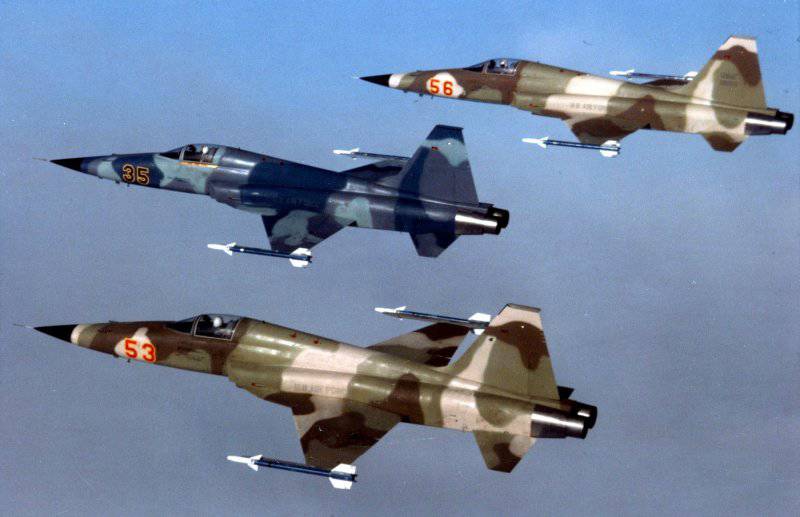
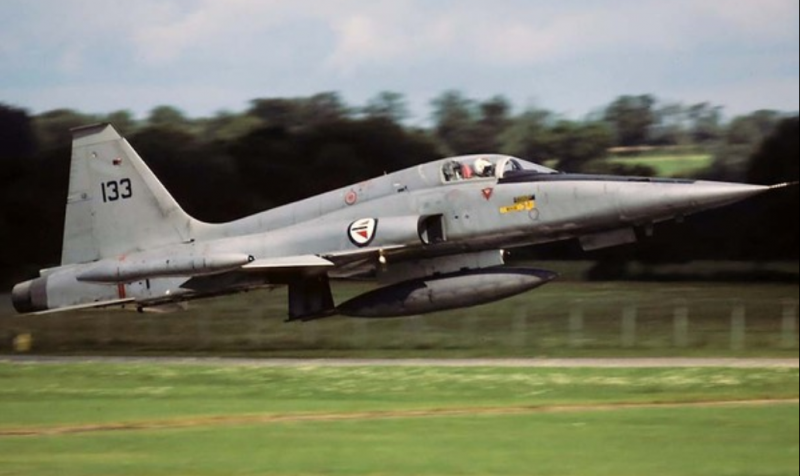
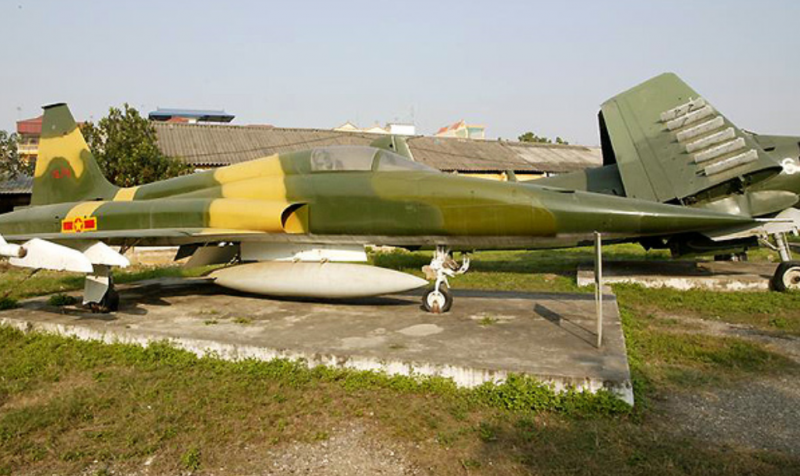
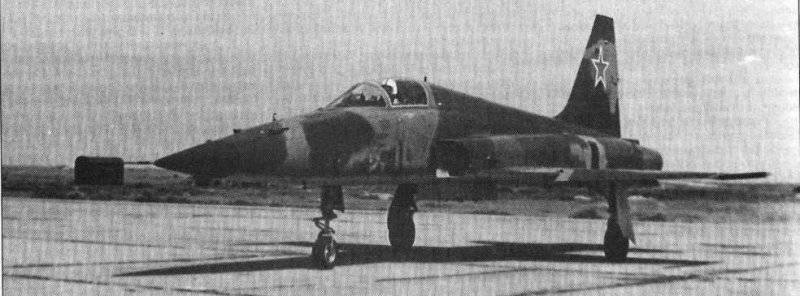
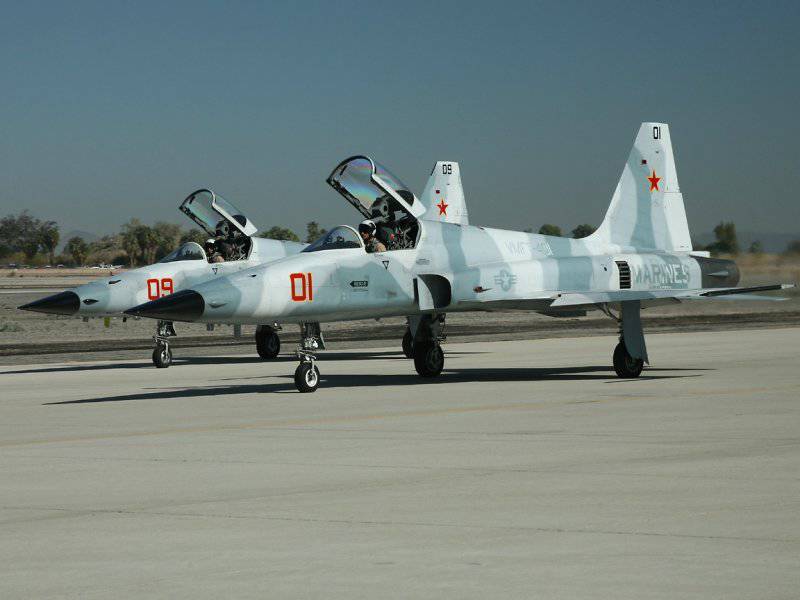
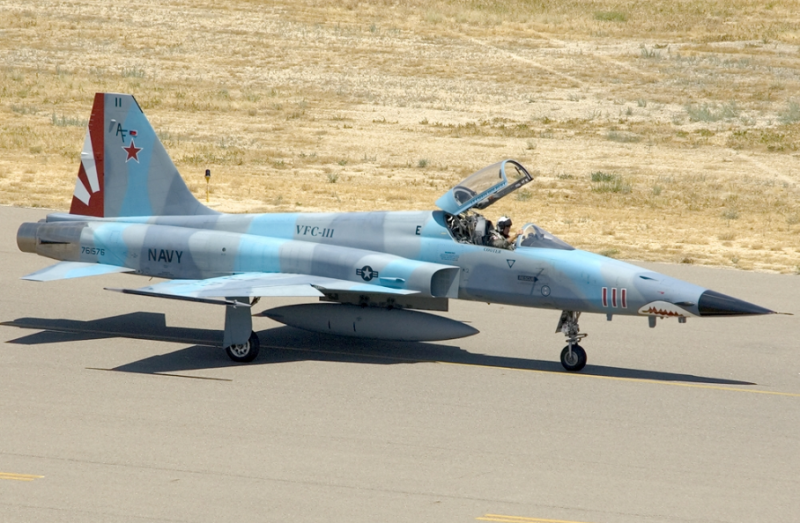
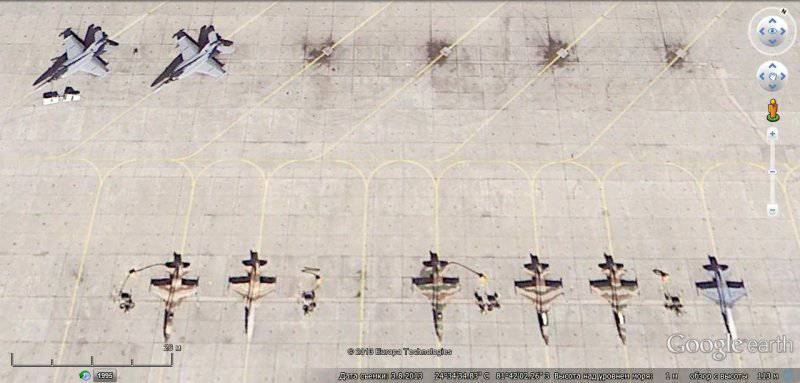
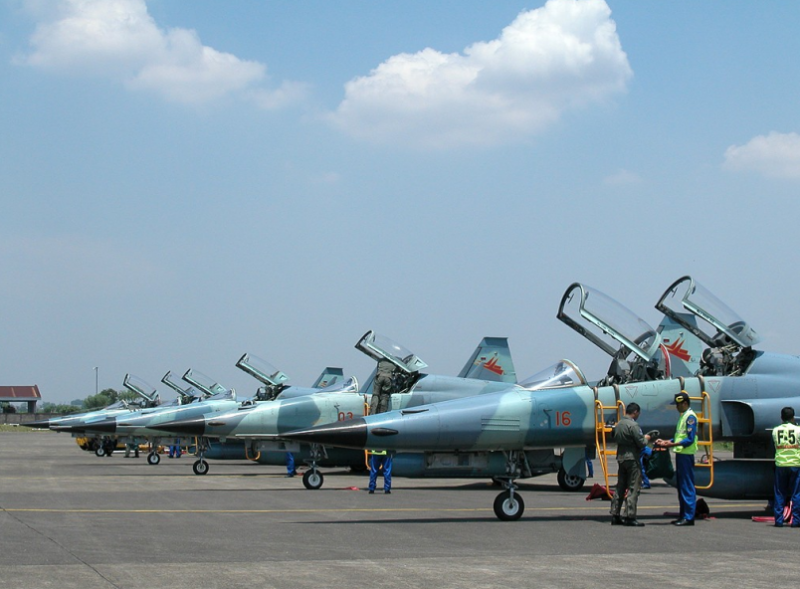
Information